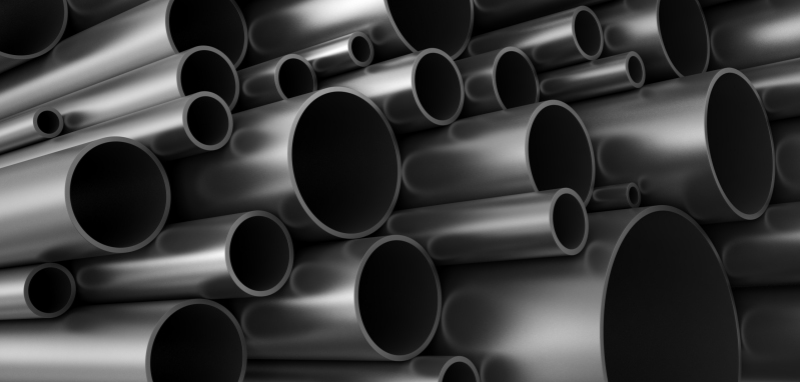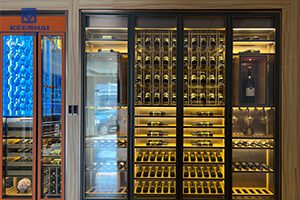Rozsdamentes acél ár
Overview of Stainless Steel as a Material
Stainless steel is one of the most versatile materials used across various industries. It is known for its exceptional corrosion resistance, strength, and aesthetic appeal. Stainless steel is found in everything from kitchen appliances and construction materials to medical devices and automotive parts, making it a vital component of modern manufacturing.
The Importance of Understanding Stainless Steel Pricing
Understanding the factors that influence the price of stainless steel is crucial for anyone purchasing or using this material. Whether you are a manufacturer, contractor, or consumer, knowing these factors allows you to make better purchasing decisions, manage project costs, and avoid sudden price increases due to market fluctuations.

Key Factors That Affect Stainless Steel Pricing
- Raw Material Costs
- Nickel Nickel, one of the key alloying elements in stainless steel, significantly impacts its price. The global supply and demand for nickel, along with mining and geopolitical factors, drive its cost. Fluctuations in nickel prices often lead to a direct rise in the stainless steel price.
- Chromium Chromium, responsible for providing corrosion resistance to stainless steel, is another significant material in the production process. Chromium prices depend on global industrial demand, and an increase in its price will result in a rise in stainless steel prices.
- Iron Ore and Other Raw Materials Iron ore is the main source of iron in stainless steel, and the price of iron ore affects the overall stainless steel price. The price of manganese, carbon, and silicon also plays a role in determining the final cost of the material.
- Energy Costs
- Energy-Intensive Production Process The production of stainless steel requires significant energy, and increasing energy costs directly raises production expenses. As energy prices climb, so does the price of stainless steel.
- Energy Efficiency of Production Facilities Some facilities use energy-efficient technology to reduce operational costs, which can help stabilize the stainless steel price. However, plants that use traditional methods with higher energy consumption may see their production costs increase.
- Supply Chain and Logistics
- Transportation and Shipping Costs Stainless steel is a global commodity, and the cost of transportation, influenced by fuel prices and logistics disruptions, can affect the final price of stainless steel.
- Supply Chain Disruptions Events like natural disasters, pandemics, or geopolitical tensions can cause supply chain disruptions. This often leads to raw material shortages, driving up the stainless steel price.
- Manufacturing Process
- Production Capacity and Efficiency Larger production facilities can take advantage of economies of scale, reducing unit costs and the final price of stainless steel. Smaller or less efficient plants may see higher production costs, which can increase the overall stainless steel price.
- Technology and Innovation in Production Technological advances that improve production efficiency can lower operational costs, helping reduce the price of stainless steel. Older facilities that rely on outdated processes may face higher costs and subsequently higher prices.
- Market Demand and Industry Trends
- Global Demand The global demand for stainless steel has a major influence on its price. Increases in demand from industries like construction, automotive, or medical devices often drive the price of stainless steel higher.
- Trends in the Construction and Automotive Sectors With the construction and automotive industries being large consumers of stainless steel, a surge in demand, especially with the rise of electric vehicles and infrastructure projects, can contribute to higher prices.
- Geopolitical and Economic Factors
- Trade Tariffs and Import/Export Regulations Government policies, such as tariffs or export taxes, can influence the stainless steel price. For example, trade restrictions between major steel-producing countries can lead to price increases.
- Currency Fluctuations As stainless steel is typically priced in US dollars, fluctuations in exchange rates can affect its cost for international buyers. A strong dollar can make stainless steel more expensive for buyers in countries with weaker currencies.
- Recycling and Sustainability Trends
- Recycling of Stainless Steel Stainless steel is highly recyclable, and the use of recycled materials can lower the price of production. As recycling processes improve, the overall price of stainless steel may decrease.
- Sustainability and Green Manufacturing Practices Eco-friendly production practices are becoming more common, reducing costs over time. Manufacturers focusing on sustainability may offer more competitive prices, contributing to price stability.

How to Calculate the Price of Stainless Steel
- Understanding the Pricing Structure Stainless steel is usually priced by ton, with variations based on alloy composition, grade, and size. These characteristics directly affect the price.
- Considering Alloy Grade and Specifications The grade of stainless steel has a significant impact on its cost. Grades like 304 are less expensive, while higher-end grades such as 316, which offer better corrosion resistance, are priced higher.
- Additional Costs to Consider When purchasing stainless steel, additional costs such as delivery charges, taxes, and handling fees should be factored into the total price.
Summary of Key Factors
The stainless steel price is affected by numerous factors, including raw material costs, energy prices, supply chain disruptions, demand from key industries, geopolitical influences, and sustainability practices. Understanding these elements can help businesses make better decisions when purchasing stainless steel.
lépjen kapcsolatba velünk
Meglátogathatja nálunk weboldal További információkért vagy Facebook-oldalunkon a legfrissebb hírekért és a projekt legfontosabb eseményeiért. Ha bármilyen kérdése vagy együttműködési kérdése van, forduljon hozzánk bizalommal, és szívesen segítünk!




















